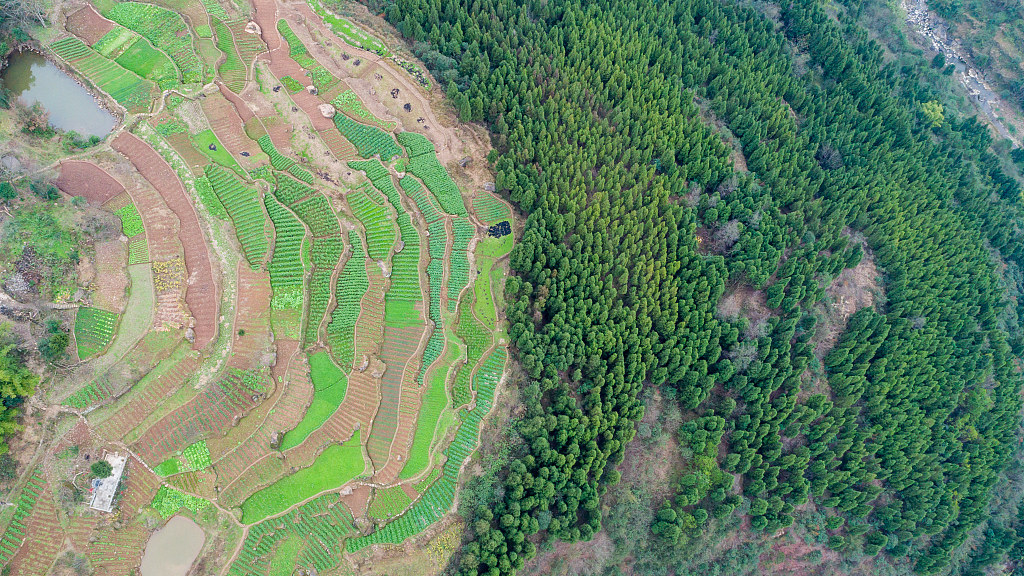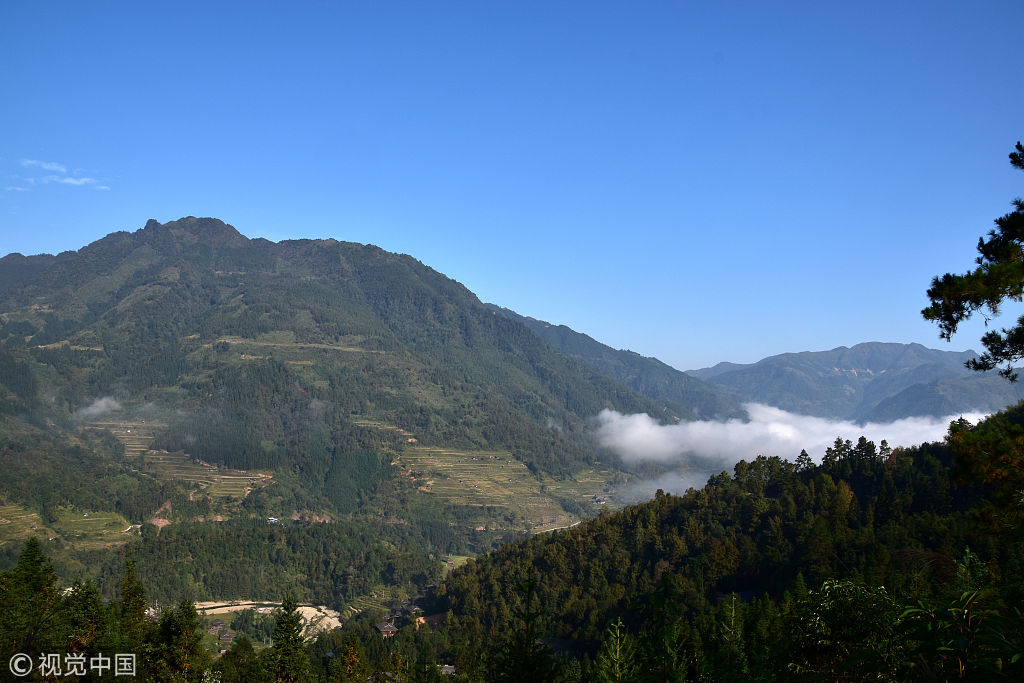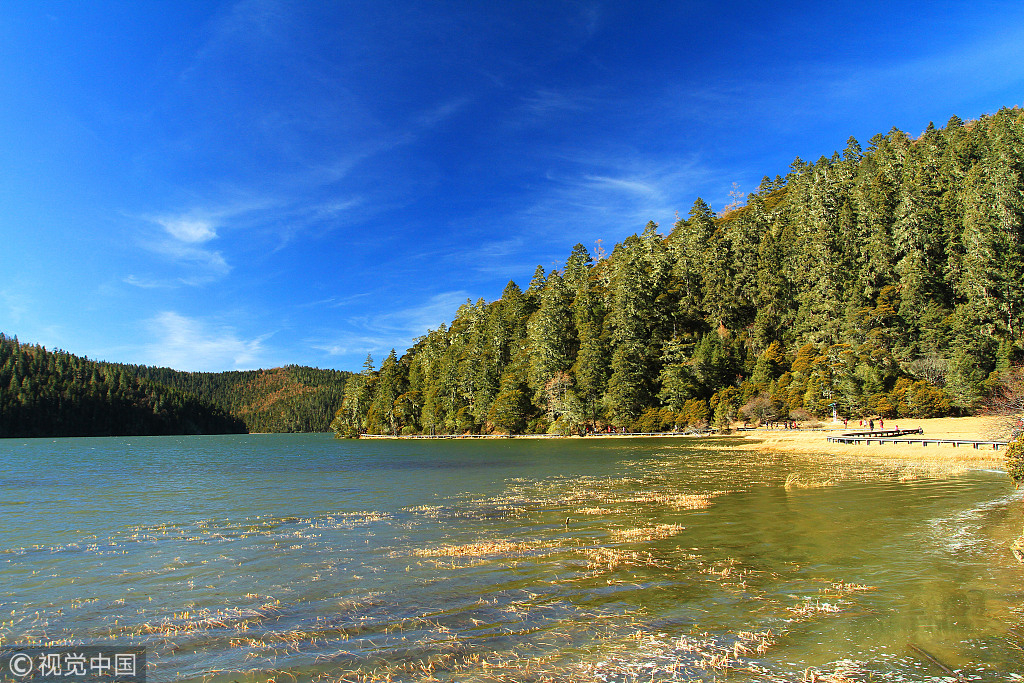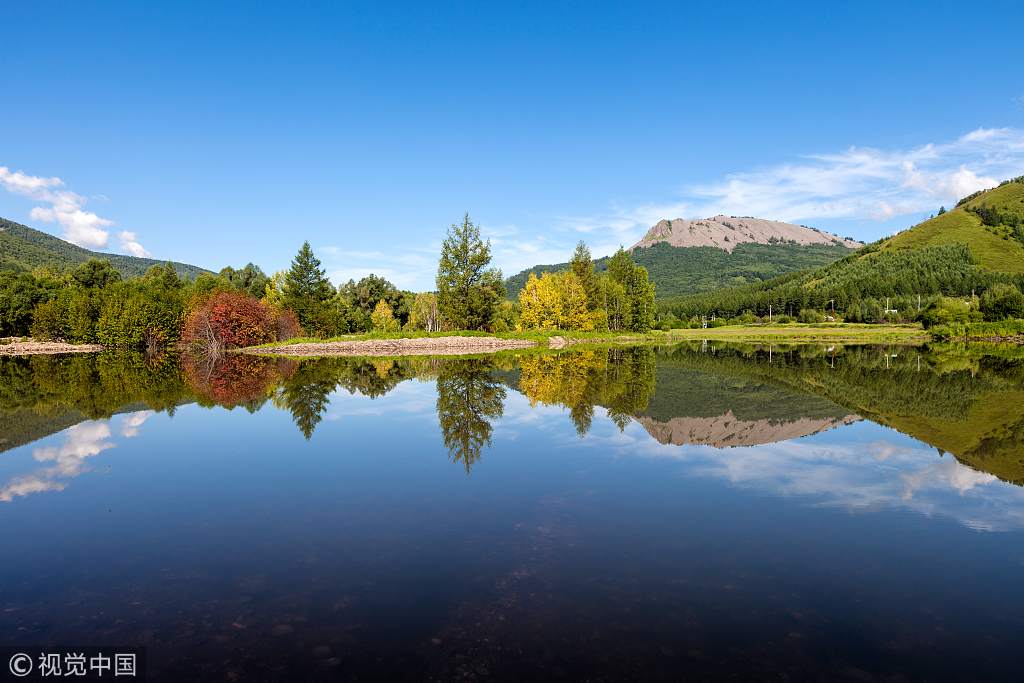
Earth
11:42, 20-Feb-2019
Young, re-growing forests store more carbon dioxide than tropical ones
CGTN

A study has shown that more than half of the carbon reservoir in the world's forests is in those where trees are relatively young or under 140 years old, rather than in tropical rainforests.
Those trees tend to regrow on land previously used for agriculture, and it is their young age that is one of the main drivers of the carbon uptake, according to the study published on Monday in the journal Proceedings of the National Academy of Sciences.

An RFFP jurisdiction, Gansu, China, 2012 /VCG Photo
An RFFP jurisdiction, Gansu, China, 2012 /VCG Photo
Since the Chinese government prioritized the policy of "Returning farmland to forest" (RFFP) in 1998, the average forest cover in the policy's 25 jurisdictions has been raised by 3.6 percent, according to the statistics of the National Forestry and Grassland Administration (NFGA) in 2017.
The assessment of the jurisdictions in 2016 showed that as a result of RFFP, 38,470 million cubic meters of water is conserved, 632 million tonnes of soil is stabilized, and 3.1 million tonnes of pollution is absorbed on an annual basis. The yearly ecological benefit is about 1,380,000 million yuan (204,140 million U.S. dollars), said Zhou Hongsheng, head of the RFFP office of the NFGA.

An RFFP jurisdiction, Guizhou, China, 2012 /VCG Photo
An RFFP jurisdiction, Guizhou, China, 2012 /VCG Photo
The study came after a NASA satellite data-based study last week showing that China's ambitious tree-planting programs and intensive agriculture contributed at least 25 percent of the foliage expansion since the new century.
With the forest development in decades, the country keeps making the world a greener place.

Potatso National Forest Park, Yunnan, China /VCG Photo
Potatso National Forest Park, Yunnan, China /VCG Photo
Forests are widely recognized as an ecosystem capable of capturing and storing large amounts of carbon dioxide, but the dense tropical forests have been assumed to play a major role in soaking up the greenhouse gases.
Researchers at the University of Birmingham analyzed the global biosphere using a new combination of data and computer modeling and found that the new forests sucked up large amounts of carbon not only due to fertilization effects but also due to their younger age.

Arxan National Forest Park, Inner Mongolia Autonomous Region, China /VCG Photo
Arxan National Forest Park, Inner Mongolia Autonomous Region, China /VCG Photo
The age effect accounted for around one-fourth of the total carbon dioxide absorbed by forests, according to the study.
Also, the age-caused carbon uptake was primarily situated not in the tropics, but in the middle and high latitude forests. Therefore, the large-scale reforestation programs in China are making a major contribution to this carbon sink.
"It's important to get a clear sense of where and why this carbon uptake is happening because this helps us to make targeted and informed decisions about forest management," said Tom Pugh with the Birmingham Institute of Forest Research.
(Cover image: Aerial shot of an RFFP jurisdiction, China /VCG Photo)
(If you want to contribute and have specific expertise, please contact us at nature@cgtn.com.)
Source(s): Xinhua News Agency

SITEMAP
Copyright © 2018 CGTN. Beijing ICP prepared NO.16065310-3
Copyright © 2018 CGTN. Beijing ICP prepared NO.16065310-3